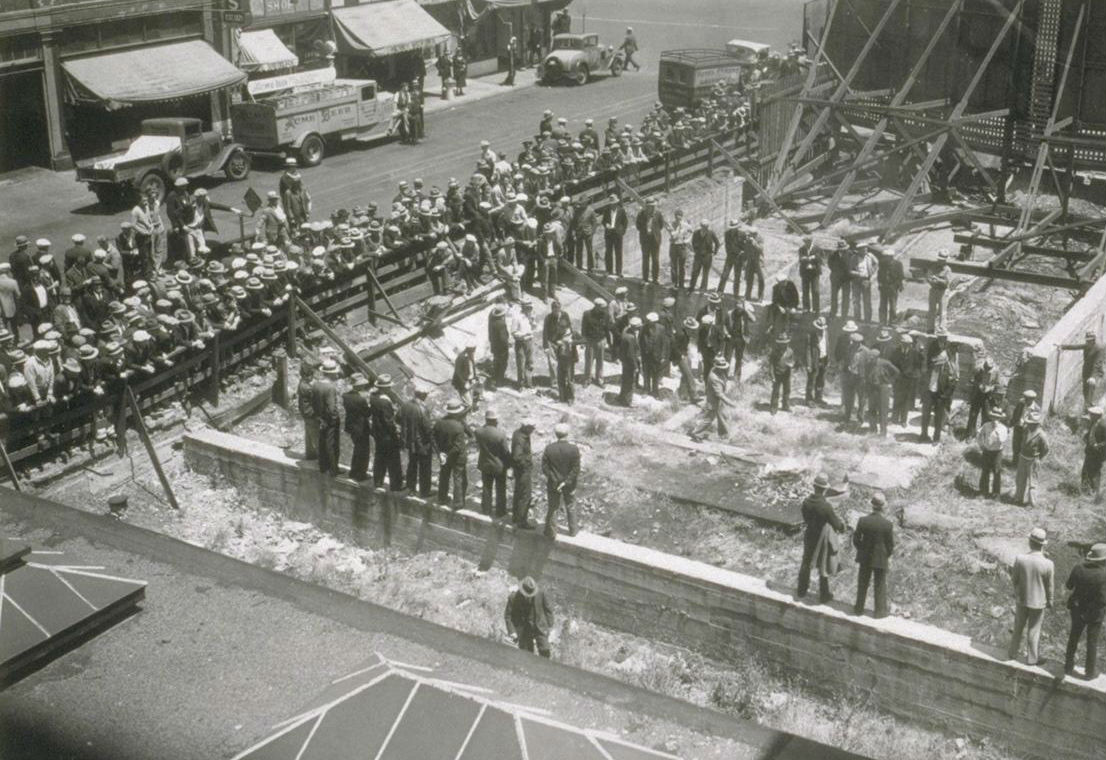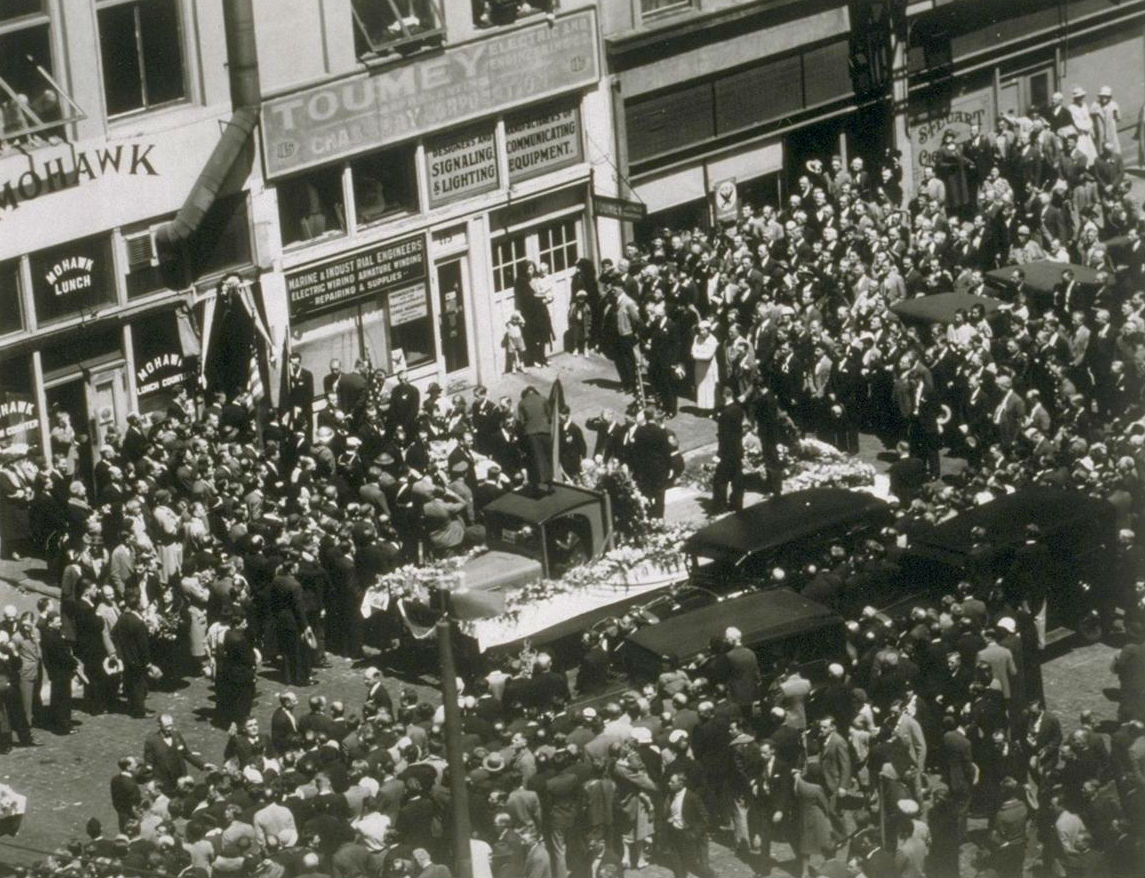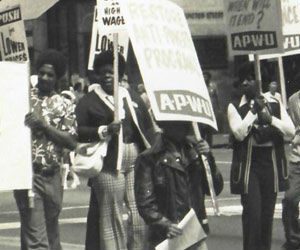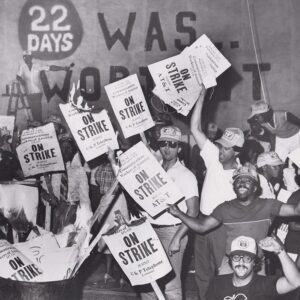June 30, 2014
War on the Waterfront
 Early in the morning on July 5, 1934, storefront owners in the Mission District of San Francisco were opening their doors. In the financial district, bankers and businessmen were trading stocks. Across the harbor, the Oakland Bay Bridge construction crew was hard at work.
Early in the morning on July 5, 1934, storefront owners in the Mission District of San Francisco were opening their doors. In the financial district, bankers and businessmen were trading stocks. Across the harbor, the Oakland Bay Bridge construction crew was hard at work.
The police stood watch as 5,000 striking longshoremen prepared for a battle that would last throughout the day. It was the beginning of a day that would change the course of West Coast labor forever.
In the months prior, the dockworkers had decided to take a stand.
Corruption on the docks was rampant. “Nearly every boss down there wanted you to bring him a bottle of wine, whiskey, or if you had a wife, he wanted to sleep with her,” Ed Thain recalled in a 1999 interview with Public Radio.
Marvin Ricks also remembered the dreadful working conditions. “I was 21. The first job I got was a one-day job, but we worked from about 8 in the morning to 12 at night. And our rate of pay was 75 cents per hour.”
 Harry Bridges, an Australian-born dockworker, had joined the International Longshoremen’s Association (ILA) in 1933 and quickly rose to a position of leadership. He attempted to defy the bosses – and the company-run union – on his own, but he quickly learned that unless he paid his dues to the “gangs” that ran the waterfront, he would be out of work.
Harry Bridges, an Australian-born dockworker, had joined the International Longshoremen’s Association (ILA) in 1933 and quickly rose to a position of leadership. He attempted to defy the bosses – and the company-run union – on his own, but he quickly learned that unless he paid his dues to the “gangs” that ran the waterfront, he would be out of work.
He joined a small group known as the Albion Hall Group that had gained notoriety by publishing a newsletter called The Waterfront Worker, selling it for a penny per issue. The articles, written by longshoremen and seaman using pseudonyms, focused on unsafe working conditions, low pay and bad bosses.
By 1934, West Coast longshoremen had reached their breaking point and on May 9, they launched their first coast-wide strike. The days of the kickbacks and bribes were over.
Bridges was elected chairman of ILA’s San Francisco Strike Committee, where he endeavored to strengthen the solidarity among the workers. He made an agreement with the other dock unions that no union would end the strike unless they all agreed. He also built unity among black and white workers.
The ship owners labeled Bridges a communist, and San Francisco newspapers published scare stories about communists massing in the foothills. The Chronicle reported, “The communist army plans a destruction of railroad and highway facilities to paralyze transportation and communication, while San Francisco and the Bay Area are made a focal point in a red struggle for revolution and control of the government.”
The strikers weren’t swayed.
Every port on the West Coast was idle. Sixteen thousand men were on strike and hundreds of ships sat with their cargo rotting.
The ship owners hired strikebreakers, housed them in barracks and on empty ships, and gave them police protection – undermining the effectiveness of the strike.
On June 16, ILA President Joseph P. Ryan flew to San Francisco from New York, met with the ship owners, and announced that he had settled the dispute.
 But the longshoremen stood firm. Without an agreement for higher wages, union recognition and a coast-wide contract, the workers ignored the union president’s request to return to work.
But the longshoremen stood firm. Without an agreement for higher wages, union recognition and a coast-wide contract, the workers ignored the union president’s request to return to work.
There had been clashes, injuries and deaths throughout the strike. On the first day of the work stoppage, picketers in the Embarcadero neighborhood were confronted after violating a no-picketing law. Police batons were swung, fists were thrown, and the melee degenerated into a battle with teargas and rocks. On May 30, dozens of people were assaulted during National Youth Day protests. Without cause, hundreds of police attacked the crowd, injuring 65 young boys and girls, sending 19 to the hospital.
The turning point came in San Francisco over the July 4th holiday.
Rincon Hill
On July 3, the doors of the waterfront piers swung open at 8 a.m. and trucks full of strike-breakers drove through. On July 4, strikers, employers, police and truck drivers all honored the holiday.
But by July 5, everyone was back in place. On Pier 38, strikebreakers unloaded ships. Fights broke out, with strikers wielding bricks and stones against police armed with teargas grenades, riot guns and revolvers.
The strikers regrouped at about 9:30 a.m. on Bryant Street, next to Rincon Hill. Two thousand workers began taking the bricks from the cobblestone street and an abandoned warehouse to build a barricade. Police attempted to charge the fort, but were held at bay by a barrage of stones and bricks.
Hundreds of strikers attempted to make their way to the ILA headquarters. Dodging bullets from police handguns, they set fire to the grass on Rincon Hill to facilitate their retreat.
By noon, both sides took time to treat their wounded. The strikers gathered at their headquarters on Steuart Street, where the day’s violence would come to a head.

Bloody Thursday
Around 1 p.m., police charged the ILA headquarters. Thousands of police resumed fighting an even larger number of strikers. Teargas canisters flew and bullets whizzed through the air.
On the corner of Mission and Steuart Streets, a police officer jumped out of his patrol car, spun around, and shot in three directions. Two strikers lay dead. Both had been shot in the back.
At 3 p.m., California Gov. Frank Merriam ordered 7,500 National Guardsmen into the city. The strikers retreated, unwilling to face-off against soldiers.
General Strike
On July 9, thousands poured into the streets to witness a funeral procession for the two men.
Until that point, the public had paid little attention to the waterfront strike. But the deaths galvanized support for the strikers. Sixty-three unions voted for a General Strike.
Starting at 8 a.m. on July 16, the San Francisco Bay Area fell silent. Except for the most essential, all work stopped.

After three days, weary of the battle but sensing the workers’ power, the city’s General Strike Committee voted to send the longshoreman’s dispute to arbitration. There, they won a 6-hour day, a pay raise, a coast-wide contract and a hiring hall run by the union.
As a result of the strike, the power on the waterfront had shifted away from the companies and their hired thugs to the workers. Following the job action, almost every dispute was settled in favor of the union.
The strike inspired union organizing in warehouses, first on the waterfront, then uptown, then further inland.
The strike had exposed the corruption of the East Coast ILA leadership and in 1937 the West Coast ILA voted to become the independent International Longshore and Warehouse Union (ILWU). Harry Bridges was elected president.
Sources: A Terrible Anger: The 1934 Waterfront and General Strikes in San Francisco, by David F. Selvin; Harry Bridges, The Rise and Fall of Radical Labor in the U.S., by Charles Larrowe; Workers on the Waterfront, Seamen, Longshoremen and Unionism in the 1930s, by Bruce Nelson.



